What did political cartoonist Thomas Nast work to expose? answers.com
Equally the election bike gets into full-swing, so do the pundits, journalists, and political cartoonists. While modern readers intrinsically link newspapers and political cartoons, the use of cartoons in the American media was minimal until Thomas Nast popularized them in the 1860s and 1870s. Known today every bit the father of American political cartoons, Nast gained fame as a cartoonist forHarper's Mag. Today he is best remembered for his cartoons about Boss Tweed and the Tammany Ring.
Tammany Hall was a New York City political organisation that originated in the late 18th century. It became the Democratic Political party's political "machine" and thus controlled the party's nominations. William M. Tweed, more ordinarily known as Boss Tweed, was a New York politician who became Tammany's leader in the tardily 1860's. As the party's dominate, he was able to appoint several metropolis officials and substantially controlled the city authorities. As a result, he had access to an enormous amount of public money, which he used to enrich himself and his closest friends and allies through a diverseness of money laundering and profit sharing operations. It is estimated that he defrauded the metropolis out of anywhere from $xxx million to $200 1000000 dollars (equivalent to $365 one thousand thousand to $two.4 billion today).
Tweed certainly had his supporters, including the large Irish immigrant population that made upwards his base. Under his lead, however, Tammany'south corruption was then vast and glaring – Tweed became known for wearing a large diamond in his shirtfront and lived in a mansion on Fifth Avenue – that he earned a broad range of critics. One of his well-nigh vocal critics was Thomas Nast, who featured Tweed and his cronies in many of his cartoons, particularly in 1870 and 1871.
Thomas Nast was a German immigrant who began his career illustrating newspapers and magazines, merely somewhen began creating political cartoons. Ascent through the social and economic ranks, Nast embodied the American dream. He was a staunch advocate for municipal reform, and Tweed's corruption fundamentally insulted his sense of equity.
![[William M. Tweed.] Sarony & Co., ca. 1869. Portrait Archive. Museum of the City of New York. 41.366.30](https://www.mcny.org/sites/default/files/MNY303368.jpg)
[William 1000. Tweed.] Sarony & Co., ca. 1869. Portrait Archive. Museum of the Metropolis of New York. 41.366.30
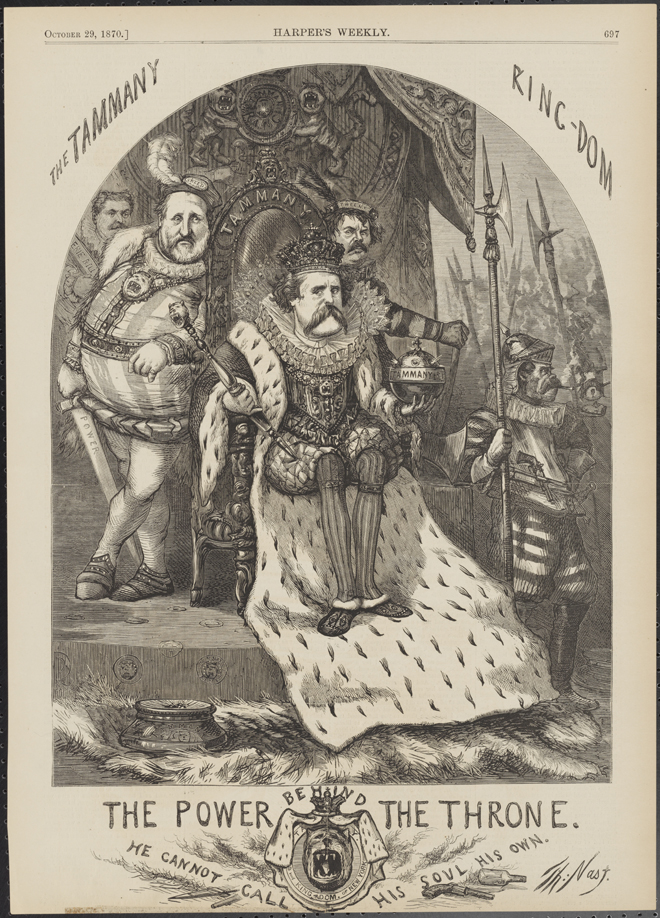
Thomas Nast (1840-1902). The Power Backside the Throne "He Cannot Telephone call His Soul His Ain." 1870. Museum of the City of New York. 99.124.vii
Never afraid to take on bug of correct and incorrect, Nast became the scourge of Tweed and Tammany. His influence was so swell primarily considering of the visual nature of his work. About of Tweed's constituents were illiterate, so while they couldn't read the scathing articles written about Tweed inTheNew YorkTimes, they could sympathise Nast'due south cartoons. Legend has information technology that Tweed was then threatened by Nast, he gave orders to "terminate them damn pictures!"
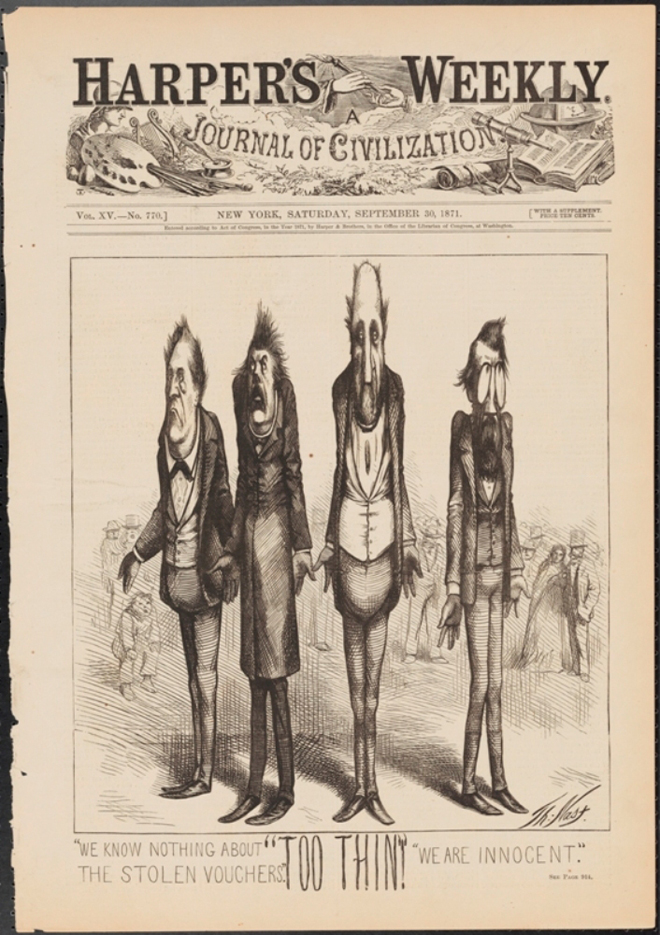
Thomas Nast (1840-1902). Too Thin, 1871. Museum of the Urban center of New York. 99.124.15
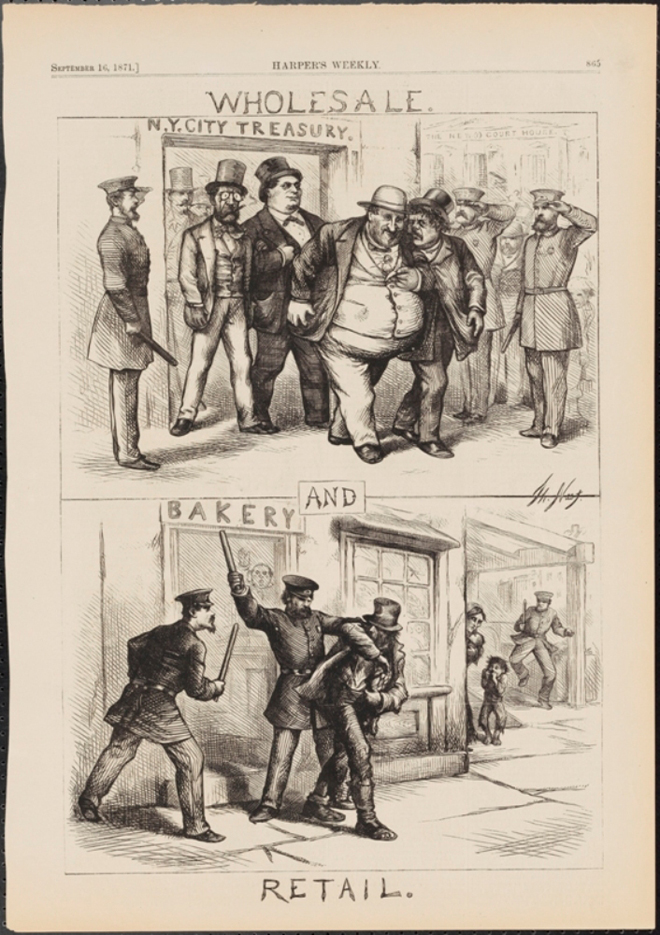
Thomas Nast (1840-1902). Wholesale and Retail. 1871. Museum of the City of New York. 99.124.5
In an try to "finish them damn pictures" Tweed sent a representative to Nast under the guise that a group of European benefactors wanted to offer him $100,000 (near $ane.8 million today) to report fine art in Europe. Nast feigned interest and was able to increase the offering to $500,000, simply to plough information technology down on the basis that he had long-ago fabricated up his mind to put the Tweed ring behind bars.
Failing to bribe Nast, Tweed and his cronies went later onHarper's, threatening to have the Board of Elections cold-shoulderHarper's textbooks, a significant fiscal threat. The board atHarper'due south chose to back up Nast, who created a series of cartoons depicting Tweed as a thief.
One can sympathise Tweed'south concern. Nast'southward portrayal of Tweed every bit enormously bloated helped demonstrate the political leader's corruption. His images captured public attention and helped incite public outrage. While he couldn't force people to human action or vote in a certain way, Nast influenced public opinion of Tweed and Tammany.
And the public responded. The 1871 ballot profoundly weakened the Tweed Ring, with the public voting many Tammany candidates out of office, an event credited in function to Nast's cartoons. While this had a huge bear upon on New York politics in general, it as well pushed Nast to the forefront of his medium. He became the man who could topple political regimes.
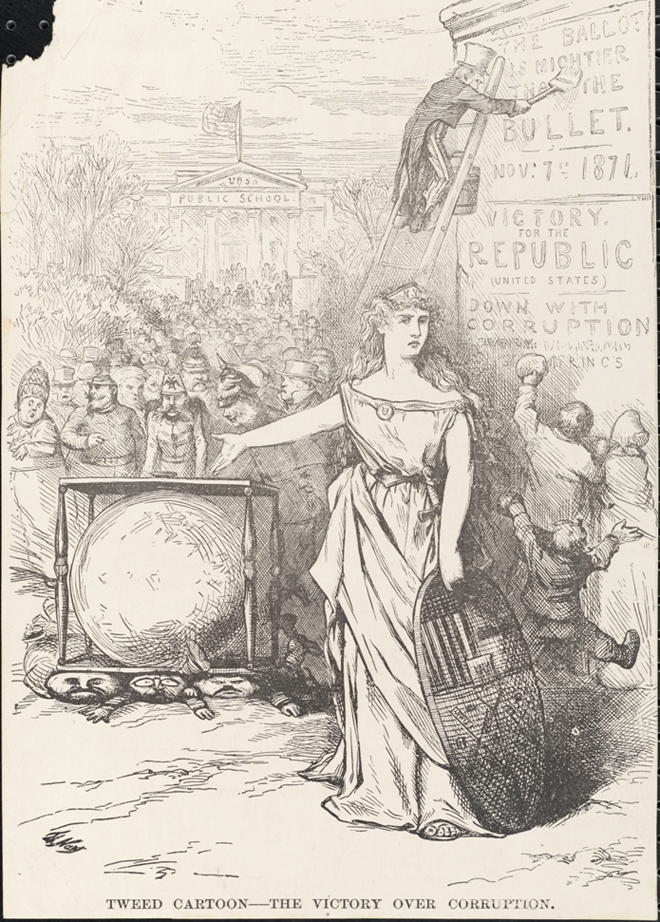
Thomas Nast (1840-1902). Victory Over Abuse. 1871. Museum of the City of New York. x2011.five.528
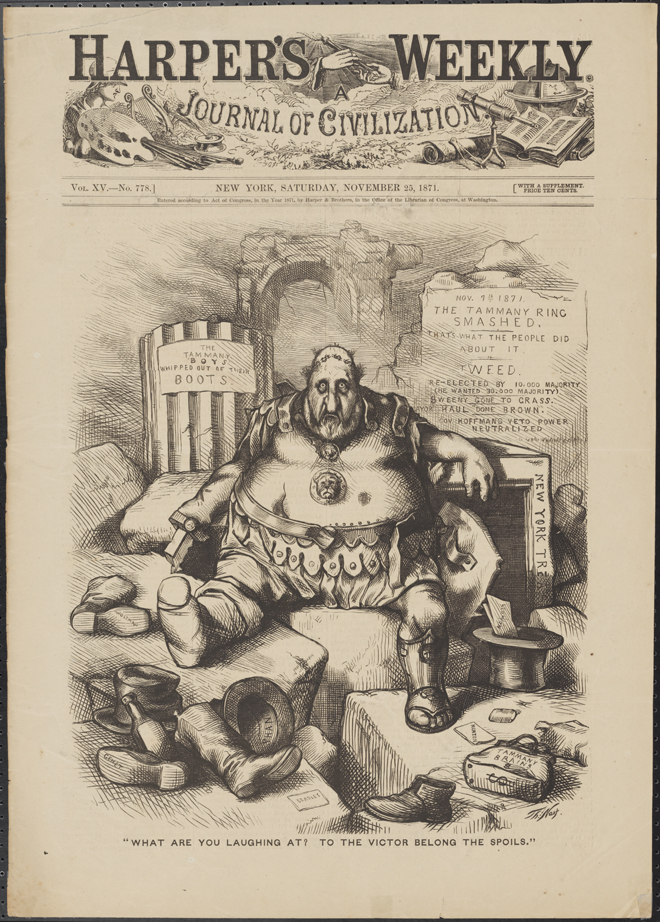
Thomas Nast (1840-1902). "What Are You Laughing At? To The Victor Belong the Spoils." 1871. Museum of the City of New York. 99.124.2
Following the 1871 election, a host of fraud, forgery, and larceny charges were brought against Tweed and his allies. Many, including Tweed himself, were sent to prison house. In 1875, even so, Tweed escaped and fix sail to Spain where he was eventually extradited afterward a Spanish officer recognized him from a Nast cartoon. Tweed was sent back to a New York jail, where he remained until his death in 1878.
Source: https://www.mcny.org/story/thomas-nast-takes-down-tammany-cartoonists-crusade-against-political-boss
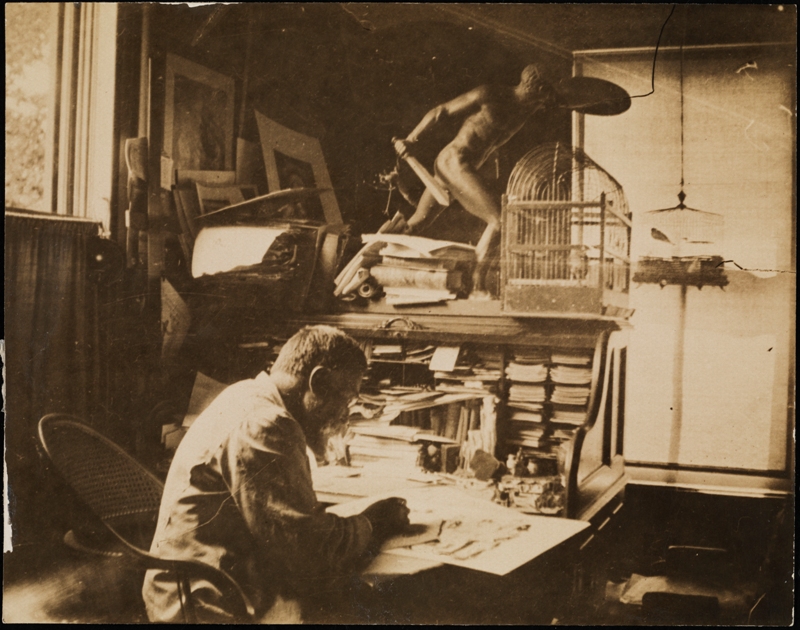
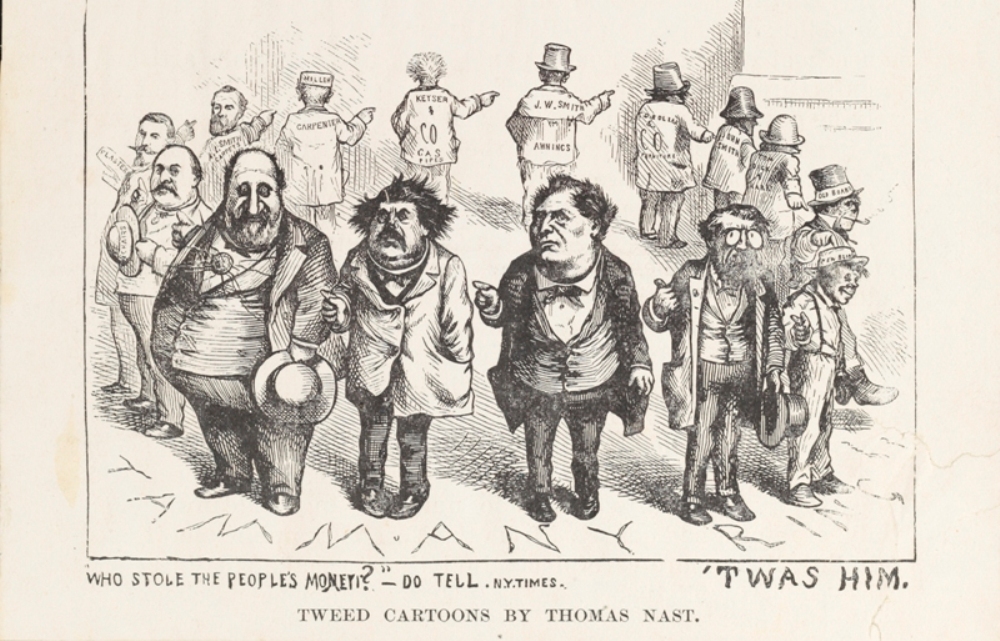
0 Response to "What did political cartoonist Thomas Nast work to expose? answers.com"
Post a Comment